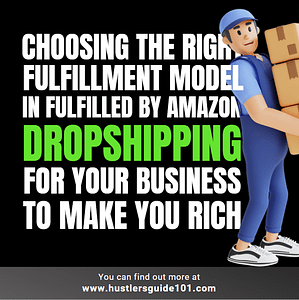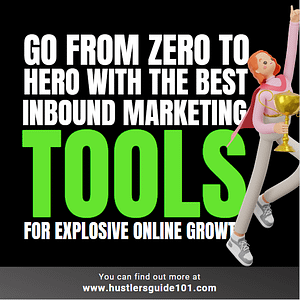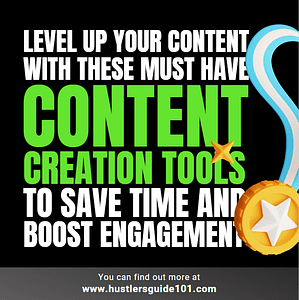
Are you feeling a little lost in the world of inbound marketing? Does the thought of social media marketing leave you scratching your head and reaching for the aspirin? Well, take a deep breath and relax, because I am here to help! In this blog post, we’re going to explore why is social media an important part of inbound marketing. And how you can use it to grow your business.
It’s no secret that attracting new customers can be a real challenge. But fear not, because social media can be a powerful tool for reaching new audiences, building brand awareness, and driving leads to your business.
So, whether you’re a social media newbie or a seasoned pro, this post is for you! Buckle up and get ready to discover the magic of social media in inbound marketing.
What is inbound marketing?
Ah, inbound marketing – the magical world where leads flow like a river, and customers are won over with the power of content. But what exactly is inbound marketing, you may ask?
Inbound marketing is a methodology that focuses on attracting customers by creating valuable content and experiences tailored to their interests and needs. It means building relationships with your audience, so they see you as a trusted source of information and a partner in solving their problems.
Unlike traditional outbound marketing, which interrupts people with ads and other forms of unsolicited communication, inbound marketing is all about pulling people towards your brand by providing them with something they find useful and engaging.
So, what does this all mean in practice? It means creating blog posts, videos, social media content, and other types of content that answer questions, provide solutions, and generally make people’s lives better in some way.
Amplifying brand awareness
Social media has revolutionized the way we interact with brands, making it easier than ever for businesses to connect with their target audience and build a loyal following. One of the most powerful benefits of social media is its ability to amplify brand awareness. Putting your brand in front of a wider audience and increasing your chances of attracting new customers.
First and foremost, it’s important to understand what we mean by brand awareness. Put simply, brand awareness is the degree to which your target audience is familiar with your brand, its values, and its offerings. When people are aware of your brand, they’re more likely to consider it when making purchasing decisions, recommend it to others, and ultimately become loyal customers.
How to amplify brand awareness of your business?
The answer lies in the power of social sharing. When your followers engage with your content on social media, they’re essentially sharing it with their own network of friends and followers, increasing the reach of your brand beyond your immediate audience. This can lead to a snowball effect, with more and more people becoming aware of your brand as your content is shared and re-shared across social media.
To make the most of this effect, it’s important to create content that’s not only engaging and informative but also shareable. This means creating content that resonates with your target audience, sparks emotions, and encourages them to take action. Whether it’s a funny meme, an inspiring quote, or a thought-provoking article, the key is to create content that people want to share with their own network.
Another effective way to amplify your brand awareness on social media is by leveraging the power of influencer marketing. By partnering with influencers in your niche, you can tap into their existing audience and reach new followers who may not have heard of your brand otherwise. This can be especially effective for newer brands or those looking to break into a new market.
Facilitating customer engagement
Social media has become a primary platform for businesses to engage with their customers and build long-lasting relationships. By facilitating customer engagement on social media, businesses can foster a loyal customer base that not only sticks around but also recommends their brand to others.
First and foremost, it’s important to understand that customer engagement on social media is all about building relationships. It’s not just about pushing your products or services, but rather about listening to your customers, responding to their feedback, and providing value to them. By doing so, you’ll not only create a more positive perception of your brand. You will also foster a community of loyal customers who are more likely to stick around and recommend your brand to others.
How can you facilitate customer engagement on social media?
The first step is to create content that sparks conversations and encourages your followers to engage with you. This can be in the form of asking questions, running polls, or sharing behind-the-scenes glimpses of your brand. By creating content that prompts your audience to engage with you, you’ll be able to start conversations, gain insights into your customer’s needs and preferences, and build relationships with your followers.
Another effective way to facilitate customer engagement on social media is by responding promptly to customer inquiries and feedback. Whether it’s a complaint, a question, or a suggestion, it’s important to acknowledge and respond to your customers in a timely manner. This not only shows that you value their input but also helps to address any issues before they escalate. By being responsive and transparent, you’ll create a positive perception of your brand and foster trust with your customers.
Lastly, don’t be afraid to go above and beyond in providing value to your customers. This can be in the form of offering exclusive discounts, providing helpful resources or tips, or simply showing appreciation for their loyalty. By providing value to your customers, you’ll create a more positive perception of your brand and foster a sense of community among your followers.
Generating leads
Social media has become an essential tool for businesses to generate leads and attract potential customers. By leveraging social media platforms, businesses can increase their visibility, reach a wider audience, and ultimately drive more leads and sales.
First and foremost, it’s important to have a clear understanding of your target audience and their needs. This will help you tailor your social media content and messaging to resonate with your ideal customer. By creating content that speaks to your audience’s pain points and offers solutions to their problems, you’ll be more likely to attract leads and convert them into customers.
How to generate leads for your business on social media?
One effective way to generate leads on social media is by creating and promoting lead magnets. A lead magnet is a valuable piece of content (such as an e-book, whitepaper, or webinar) that you offer for free in exchange for the user’s contact information. By offering a lead magnet, you not only provide value to your audience but also capture their contact information, which you can use to follow up and nurture the lead.
Another effective way to generate leads on social media is by running targeted advertising campaigns. Social media platforms offer powerful targeting options that allow you to reach your ideal audience based on their demographics, interests, and behavior. By creating targeted ads that speak directly to your audience and offer a compelling call-to-action, you can drive more leads and conversions.
Targeting specific audiences
One of the biggest advantages of social media for inbound marketing is the ability to target specific audiences. By reaching the right people with the right message, businesses can increase engagement, drive conversions, and ultimately, grow their business.
The first step in targeting specific audiences on social media is to understand your ideal customer. This means developing detailed buyer personas that outline the demographics, interests, and pain points of your target audience. With this information in hand, you can then use social media advertising tools to target your ideal customer with relevant content.
How to target specific audiences on Social media?
One of the most powerful social media advertising tools for targeting specific audiences is Facebook Ads Manager. This tool allows you to create highly targeted ads based on a range of criteria, including demographics, interests, behaviors, and more. By using Facebook Ads Manager, you can ensure that your content is only seen by the people who are most likely to be interested in it.
Another effective way to target specific audiences on social media is through influencer marketing. By partnering with influencers who have a strong following in your niche, you can reach a highly engaged audience and drive more conversions. When selecting influencers, it’s important to choose those whose values align with your brand and who have a strong track record of engaging with their audience. An example of an influencer marketer is:
In addition to social media advertising and influencer marketing, another effective way to target specific audiences is through content optimization. By creating content that is tailored to the interests and pain points of your target audience, you can increase engagement and drive more conversions. This means conducting keyword research, using social media analytics to identify popular topics, and creating content that speaks directly to your ideal customer.
Providing valuable insights
Social media provides valuable insights that can help businesses improve their inbound marketing strategies. By analyzing social media data, businesses can gain a deeper understanding of their audience and optimize their content to drive more conversions.
The first step in using social media insights for inbound marketing is to track your social media metrics. This includes metrics such as engagement rates, reach, and follower growth. By tracking these metrics, you can gain a better understanding of how your content is performing and make data-driven decisions to optimize your strategy.
![59 Content Frameworks [50M+ Views & $10M+ sales]](https://ml7mr2tqkwmf.i.optimole.com/cb:ybm1.679b9/w:1024/h:535/q:mauto/f:best/https://hustlersguide101.com/wp-content/uploads/2023/09/ebook-for-blog.jpg)
How to provide valuable insights on Social media?
An important aspect of social media insights for inbound marketing is understanding your audience. Social media platforms provide valuable demographic and behavioral data that can help you understand who your audience is and what they’re interested in. This information can be used to create targeted content that resonates with your audience and drives more conversions.
In addition to tracking metrics and understanding your audience, social media insights can also help you stay up-to-date with industry trends and changes. By following industry influencers and tracking relevant hashtags, you can stay informed about the latest trends and adapt your strategy accordingly.
To take advantage of social media insights for inbound marketing, it’s important to use social media analytics tools. Many social media platforms offer built-in analytics tools, but there are also third-party tools available that provide more advanced insights and reporting.
How do I do inbound marketing for my freelance business and generated leads?
Why is social media an important part of inbound marketing? As a freelance content writer, I gotta say – social media inbound marketing is a total game-changer! By creating killer posts and carousels on LinkedIn, I’m able to show off my skills and attract potential clients in a way that feels natural and authentic.
The best part about social media inbound marketing? It’s all about building relationships, not just blasting out cold pitches or ads. By sharing valuable content that speaks to my target audience’s needs and interests, I’m able to build a loyal following of potential clients who are genuinely interested in what I have to offer.
And here’s the kicker – by actively engaging with my followers through comments, messages, and posts, I’m able to build trust and establish a rapport that makes it easier to land new clients down the line.
So if you’re a freelancer or small business owner looking to grow your client base, I highly recommend giving social media inbound marketing a try. With a little creativity and consistency, you will be amazed at the connections you can make and the opportunities that can come your way!
Hot FAQs on why is social media an important part of inbound marketing
What is an example of Social media inbound marketing?
An example of social media inbound marketing is when a clothing brand creates engaging posts on Instagram that showcase their latest products and fashion trends. The posts are designed to appeal to their target audience and encourage them to follow the brand and engage with their content by liking, commenting, and sharing the posts. By creating engaging content, the brand is able to attract potential customers to their social media page and build relationships with them, ultimately leading to increased brand visibility and sales.
What is inbound vs. outbound marketing?
Inbound marketing refers to the process of attracting customers through relevant and useful content, while outbound marketing involves pushing messages to a wide audience in the hopes of attracting potential customers. Inbound marketing is focused on building relationships and establishing trust with customers, while outbound marketing relies on interrupting potential customers’ attention to gain visibility.
What makes a good inbound marketer?
A good inbound marketer understands the target audience’s needs and preferences and creates content that provides value to them. They know how to optimize their content for search engines and social media platforms, and they continually analyze data to improve their strategy.
A good inbound marketer also stays up-to-date with the latest marketing trends and technologies and is flexible and adaptable to changes in the industry. Additionally, they are skilled communicators and have a deep understanding of how to build relationships with customers through content and engagement.
Also read: 9 BEST BLUE LIGHT GLASSES CLEAR FOR EYE STRAIN [REVIEWED-2023]
Wrapping up
And there you have it, folks – Why is social media an important part of inbound marketing?
Social media is an incredibly powerful tool for businesses of all sizes, and when used correctly, it can help you achieve your inbound marketing goals faster and more effectively. Whether you’re looking to increase brand awareness, drive traffic to your website, or generate leads, social media can play a key role in your overall strategy.
But remember, success on social media doesn’t happen overnight. It takes time, effort, and commitment to provide value to your audience. So, be patient, be consistent, and above all, be human. Social media is all about building relationships, so make sure to engage with your audience, listen to their feedback, and respond to their questions and comments.
Also read: 16 SCALABLE BUSINESS IDEAS YOU CAN START TODAY [UPDATED 2023]







